John Wilkinson (Syracuse pioneer)
| John Wilkinson Jr. | |
|---|---|
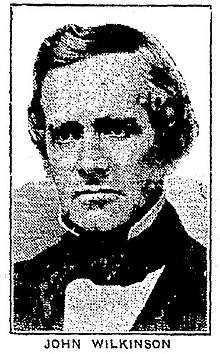 | |
| Born |
September 30, 1798[1] Troy, New York, United States[2] |
| Died |
September 19, 1862 (aged 63)[3] Syracuse, New York, United States |
| Occupation | Postmaster, Lawyer, Assemblyman, Banker, Railroad president |
| Religion | Unitarian |
| Spouse(s) | Henrietta Wilhelmina Swartz.[3] |
| Children |
Joshua Forman Wilkinson (1829-1889) Alfred Wilkinson (1832-1886) |
| Parent(s) |
John Wilkinson (1858-1802)[2] Elizabeth "Betsey" Tower (born 1764) |
John Wilkinson (September 30, 1798 - September 19, 1862) was a lawyer and first Postmaster of community known as Bogardus Corners, Cossit's Corners and Salina in Central New York. As a young man, Wilkinson took inspiration from a poem about an ancient city and named the new village, Syracuse just in time for the opening of the Erie Canal.[4] Wilkinson was a prominent citizen in Syracuse and was an original town planner and helped lay out and name the village streets. He also served as an assemblyman and founded the Syracuse Bank in 1838.[5]
He was a close friend of Unitarian minister, Samuel Joseph May, the fiery abolitionist. Wilkinson was an out-spoken advocate of the anti-slavery movement. His grandson, also named John Wilkinson (1868-1951), was chief engineer at Franklin Automobile Company where he invented the air-cooled motor used in the Franklin automobile which was manufactured in Syracuse for 35 years.
Biography
John Wilkinson was the son of John Wilkinson (1758-1802) and Elizabeth "Betsey" Tower (born 1764). Together, the couple settled in Troy, New York, where they had four children. Seventeen years later, with his wife and children, Wilkinson Sr. left Troy in the dead of winter leading a cow[6] and hiked west 180 miles with ox-drawn wagon (sledge) along the corridor that today roughly corresponds to Route 20.
John Wilkinson Jr. was only five-months old in 1799 and was still being nursed by his mother[2] when the family settled about a mile from Skaneateles Lake in the Finger Lakes region of Upstate New York where they built a farm.[2] He was only three years old in 1802 when his father died after falling from the roof of the family's log barn. His mother remained on the "wilderness" farm and ran it with the help of her sons.[6]
Education
He attended school in Skaneateles until he was 12 years old. Determined to give her children a good education after her husband's death, Wilkinson's mother enrolled him in Onondaga Academy.[6] Local residents who remembered Wilkinson recalled that he walked 13 miles from his home to the academy at Onondaga every Monday morning and would return by foot every Friday night carrying the family food for the week on his back.[7]
Onondaga valley
Wilkinson Jr. settled in the area on the Southside of Onondaga Lake in Central New York where he was a lawyer and the first Postmaster of Syracuse.[5] He acquired some farm land, extending for some distance around where the Globe Hotel stood.[8]
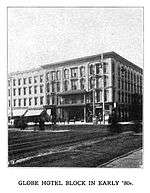
The land remained in the family until April 1889, when the family sold it to satisfy the creditors of a failed banking endeavor, Wilkinson & Company, which was established by his two sons, Alfred Wilkinson and J. Forman Wilkinson and failed on December 9, 1884. At that time, John Wilkinson of Chicago filed deeds in the County Clerk's office, conveying to him, the residences of both brothers (on James Street) and the building which "has since become known in court as the Globe property."[8] Both sons died untimely deaths. J. Forman died two weeks after the land was sold and Alfred had passed a short time before.[9]
Law practice
Wilkinson was acquainted with Joshua Forman, one of the patrons of the Onondaga Academy, and entered the law office of Forman & Sabin where he studied law.[6] He was admitted to the bar in New York State in September 1819, and was the first lawyer to settle in Syracuse, New York.[7]
In 1819, the same year he was admitted to the bar, Wilkinson helped survey the Walton Tract which was the "nucleus" of Syracuse. That same year, he opened a law office at South Salina and West Washington streets on his property which was later the site of the Globe Hotel, and some time afterwards the E. W. Edwards Department Store. In the early days, "many of his friends considered the location too far out of the village."[6]
Personal life
The Wilkinson family were from a distinguished line of families in the Syracuse area including; Leavenworth (Elias W. Leavenworth who was the mayor of Syracuse twice), Belden, Forman and Van Duyn.[10]
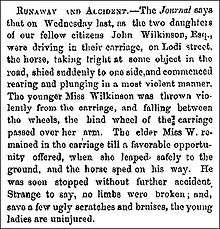
John Wilkinson was married to Henrietta Wilhelmina Swartz on February 24, 1825.[6] Together, they had eight children (three daughters and five sons) who were all born in Syracuse, New York;[3]
- John Swartz Wilkinson (August 8, 1827 - July 25, 1836) - Died in Syracuse, New York at age 7.
- Joshua Forman Wilkinson (June 12, 1829 - May 4, 1889) - Graduated from the Rensselaer Polytechnic Institute as a civil engineer. He was a railroad man before the war, served in the New York 149th during the war, later was a Syracuse banker[11] - Died at his home on James Street after a short illness of pneumonia, buried in Oakwood Cemetery. He was named after Judge Joshua Forman, founder of Syracuse and a personal friend of the family.[9] His son was John Wilkinson (1868-1951), inventor of the air-cooled motor used in the Franklin (automobile).
- Alfred Wilkinson (August 17, 1832 - July 7, 1886) - Syracuse banker[11] - Married to Charlotte May, the daughter of Reverend Samuel Joseph May.[10]
- Maria Hermans Wilkinson (born December 15, 1834) - Married F. C. Welsch and died in Germany.[9]
- Theodosia B. Wilkinson (born July 16, 1837) - She married Joseph Kirkland.
- John Wilkinson (born February 14, 1840) - He married Mary Ware Fogg and was later of Chicago, Illinois.
- Janette Lee Wilkinson (September 1, 1841 - October 8, 1842), died in Syracuse, New York at age 13 months.
- Dudley P. Wilkinson (born October 1, 1843) - Later from Chicago, Illinois.[9]
Swamp land
The area by Onondaga Lake was known from 1806 to 1809 as Bogardus Corners, from 1809 to 1812 as Milan, from 1812 to 1814, as South Salina, from 1814 to 1817 as Cossitt's Corners. Salina, now constituting the north part of the city, was incorporated as a village on March 12, 1824, and continued as an independent corporation until 1847 when it was merged into Syracuse.[12]
The most recent name, Cossitt's Corners, occurred when Sterling Cossitt of Marcellus bought the local tavern located in the area later known as Clinton Square. The area was largely avoided by settlers because of swampy living conditions. In 1818, the village of Cossitt Corner's enlisted Joshua Forman to act as agent to develop the tract. "He advertised the advantages of the area including the location of the Great Western Canal and the Seneca Turnpike, the proximity to the salt works, and water power from Onondaga Creek where three mills were already in operation."[13]
Local settler, James Geddes, had surveyed the land and made design plans several years earlier; however, so many changes had been made, the land needed to be resurveyed. Forman had his younger brother, Owen Forman and John Wilkinson, who studied law with Joshua Forman, complete the task and laid out the streets in the new village. Some of the original street names were Turnpike (Genesee Street), Water Street (Canal Street) and Dock Street (later called James Street).[13]
Syracuse's low, swampy land was ideal for canal construction. The Erie Canal opened in 1825 and quickly established the city's dominance over nearby settlements. As a result of the boom of the early canal years, the villages of Salina and Syracuse merged to become the City of Syracuse in 1848.[4]
Postmaster
John Wilkinson was appointed Postmaster on February 24, 1820, of the area that included several small towns and villages, including; Bogardus Corners, Cossit's Corners and Salina.[2] The post office was a small business. Postal receipts were only $10 a quarter, or $40 a year, as contrasted with the receipts for 1952; $4,440,543.[14]
The village was so small and there were so few patrons of the post office in the early days that Postmaster Wilkinson carried the mail about in his hat and delivered it to friends whom he "chanced to meet."[6]
There are two different accounts of the first post office in the city. The more picturesque of the two states that it was literally a hole in the wall, situated in the store of General Granger on the present site of the Syracuse Savings Bank Building. Others have recalled that it was in Judge Forman's office in the Forman House, where Water Street crosses Clinton Square.[15]
Wilkinson soon decided a change in location would be advantageous and the post office was moved to the drug store of Henry W. Durnford in East Washington Street, later the site of Lincoln Bank. This was the first change in location of the post office; for several years it was moved virtually at the "will" of the postmaster.[15] When he moved the office to new quarters, Wilkinson carried all the equipment on his shoulders and was "forced" to make only one trip.[6]
Syracuse is named
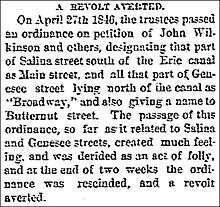
The original settlement was a conglomeration of several small towns and villages and hence did not get recognition from the United States Government. There was a delay in establishing the post office because the settlement did not have a name. Joshua Forman wanted to name the village, Corinth, however, when John Wilkinson made an application for a post office in that name in 1820, it was denied because the same name was already in use in New York State in Saratoga County.[13]
Wilkinson had read a poetical description of Syracuse, Sicily (Siracusa), which described that city and told of its place in ancient history.[16] Wilkinson saw many similarities between the two areas. There were the gentle hills sloping to the beautiful lake, the lake itself, of similar size and form to Onondaga Lake and salt springs that had both "salt and fresh water mingling together."[17]

The poem was from a book of Oxford University prize poems written by Edward Stanley, Lord Derby, (namesake of the derby hat). The poem had won the Chancellor's prize and was translated from Latin. It was an epic about the Island of Ortygia,[18] long before the foundations of Syracuse in Sicily, a city on a lake fed by cold springs. A nearby town was mentioned named Salina. In addition, the Roman statesmen; Cicero, Marcellus and Messina were mentioned which were all names of towns in the area.[10]
The topographical similarity was remarkable. "The view from where is now Long Branch on Onondaga Lake back to the encircling hills, with the bowl between and low lying salt lands of Liverpool and Geddes fringing the foreground is duplicated in a picture of the basin in which the city of Archimedes lived and worked. In addition, the marshes it faced were saline; it was on the highway of travel and nearby was a town called Salina. These material things are said to have led John Wilkinson to say to our city 'I baptize thee Syracuse.'"[18]
"Bleat even now the earth, since wonderful Nature scatters so much wealth about and from her lap pours forth so many delights. So that thou, oh city, with the spirits and arms of thy citizens, need consult only for thy fame..." - From the epic poem, "Syracuse" by Edward Stanley
On February 4, 1820, thirteen men which entailed all citizens (women were not counted as citizens) of the community met to choose a name. Suggestions included: Algiers, Wales, and Barbara.[13] Wilkinson soon proposed the name Syracuse to fellow townsmen and it was accepted as the name of the village and as the name of the new post office.[16]
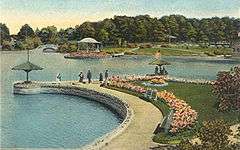
Syracuse received its village charter in 1825. At the time of incorporation the village had 15 merchants, one newspaper, a fire department, several small industries and a total population of 600.[19] The new village was the union of Cossit's Corners (formerly Bogardus Corners), Walton Tract, Milan, Salina, Onondaga Valley and another small settlement called Geddes.[16]
City leader
Wilkinson was an important city leader from the early days. He was appointed as Village Clerk in 1825[6] and was a member of the New York State Assembly (Onondaga Co.) in 1835 and 1836. He also was president and helped organize the Bank of Syracuse in 1838 with Horace White.[19]
He also was president of the Syracuse City Water Works Company, a public utility,[20] and built the reservoir on Onondaga Hill which long supplied Syracuse with water.[6] The Wilkinson Reservoir (now called Hiawatha Lake in Onondaga Park) was named for him.[10]
Railroad president
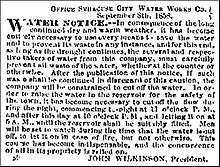
Wilkinson was a major proponent of railroads and it was his efforts that enticed many railroads to the city who soon built lines that "radiated" out of Syracuse and gave the salt industry early impetus.[21]
In 1842, Wilkinson was offered presidency of the old Syracuse and Utica Railroad which later merged with the New York Central Railroad. In order to accept, he felt ethically he should give up his former position and on January 25, 1840, after 20 years of service, the city's first Postmaster resigned.[15] During his tenure, he had served under four presidents, James Monroe, John Quincy Adams, Andrew Jackson and Martin Van Buren.[22]
Wilkinson was considered one of the pioneer railroad magnates in the United States. After serving as president of the Syracuse and Utica Railroad, he became a director and counsel of the New York Central Railroad.[6] He later served as president of the Michigan Southern and Northern Indiana Railroad company's board of directors and was elected to that office on April 23, 1857, in Adrian, Michigan.[23] He was also a member of the board of directors for the Terre Haute, Alton and St. Louis Railroad.[6]
Wilkinson later donated to the New York Central Railroad Company a tract of land between Geddes and West Street and the Erie Canal for the railroad's shops and yard; "As a promoter of railroad interests."[1]
Unitarianism
A close friend of Unitarian minister, Reverend Samuel Joseph May, the fiery abolitionist, Wilkinson became prominent in the anti-slavery movement.[10]
Unitarian Universalism was the religion of choice for generations of the Wilkinson's. In the early days, Wilkinson was on the committee that welcomed May to Syracuse in 1843. The pastor's daughter, Charlotte May, later married Wilkinson's son, Alfred Wilkinson.[10]
Later life
John Wilkinson died in Syracuse on September 19, 1862, at age 63.[3]
References
- 1 2 Fitch, Charles Elliott. Encyclopedia of biography of New York. The American Historical Society, New York, New York, 1916, pg. 123.
- 1 2 3 4 5 "Revolutionary War veteran's son gave city its name". The Post-Standard. Syracuse, New York. August 27, 2002.
- 1 2 3 4 "John Wilkinson". Family Tree Maker, 2010. Retrieved 2010-07-24.
- 1 2 "Syracuse Planning" (PDF). City of Syracuse, N.Y., 2010.
- 1 2 Hardin, Evamarie. Syracuse landmarks: an AIA guide to downtown and historic neighborhoods. Onondaga Historical Association, Syracuse University Press, 1993. Retrieved 2010-07-23.
- 1 2 3 4 5 6 7 8 9 10 11 12 "Syracuse Was Christened 112 Years Ago". The Post-Standard. Syracuse, New York. February 24, 1932.
- 1 2 "Homage Paid Pioneers Who Cleared Forest". Syracuse Herald. Syracuse, New York. May 31, 1925.
- 1 2 "Winning in the Test Case". Syracuse Daily Standard. Syracuse, New York. June 14, 1886.
- 1 2 3 4 "J. F. Wilkinson Dead". Sunday Herald. Syracuse, New York. May 5, 1889.
- 1 2 3 4 5 6 "Syracuse Owes its Name to One John Wilkinson". Syracuse Herald Journal. Syracuse, New York. August 2, 1998.
- 1 2 Morris, Peter. Syracuse Base Ball Club. Peter Morris, 2007-2008. Retrieved 2010-07-23.
- ↑ French, John Homer. Gazetteer of the State of New York. R. Pearsall Smith Publishers, 1860, pg. 488.
- 1 2 3 4 "Shades of Oakwood - Early History of Syracuse". Early History Syracuse, 2010.
- ↑ "Post office Growth Fast; 1953 Receipts 100,000 Times Volume of 1820". The Post-Standard. Syracuse, New York. 1963.
- 1 2 3 "Postoffice Growth Fast; 1953 Receipts 100,000 Times Volume of 1820". The Post-Standard. Syracuse, New York. 1963.
- 1 2 3 "Syracuse - Historical Sketch of the "Central City," and the Importance of the Bell System in Its Business and Social Life". The Telephone Review, June 1912, pp. 135-139.
- ↑ "Syracuse Formed as Village 96 Years Ago Today". Syracuse Journal. Syracuse, New York. April 13, 1921.
- 1 2 "Named Central N.Y. Towns Out of Dictionary". Syracuse Herald. Syracuse, New York. May 20, 1923.
- 1 2 "New York - Syracuse". Atlantis International, 2010.
- ↑ "Water Notice". Central City Daily Courier. Syracuse, New York. November 22, 1858.
- ↑ "New York, Syracuse". Atlantis, 2010. Retrieved November 3, 2010.
- ↑ "Post office Once 'Hole in Wall'". Syracuse Journal. Syracuse, New York. March 20, 1939.
- ↑ "Annual Election for Directors". New York Daily-Times. New York, New York. April 29, 1856.